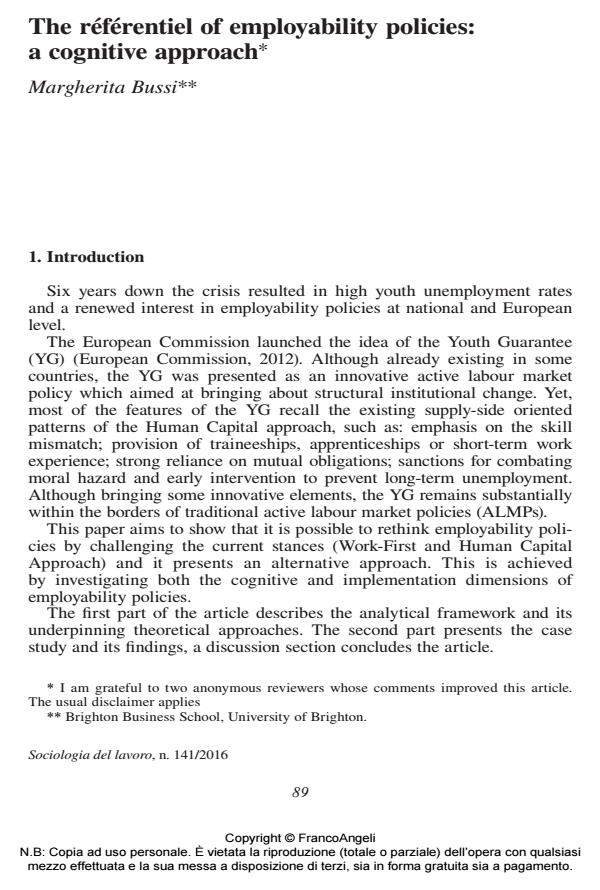The référentiel of employability policies: a cognitive approach
Titolo Rivista SOCIOLOGIA DEL LAVORO
Autori/Curatori Margherita Bussi
Anno di pubblicazione 2016 Fascicolo 2016/141
Lingua Inglese Numero pagine 18 P. 89-106 Dimensione file 222 KB
DOI 10.3280/SL2016-141006
Il DOI è il codice a barre della proprietà intellettuale: per saperne di più
clicca qui
Qui sotto puoi vedere in anteprima la prima pagina di questo articolo.
Se questo articolo ti interessa, lo puoi acquistare (e scaricare in formato pdf) seguendo le facili indicazioni per acquistare il download credit. Acquista Download Credits per scaricare questo Articolo in formato PDF

FrancoAngeli è membro della Publishers International Linking Association, Inc (PILA)associazione indipendente e non profit per facilitare (attraverso i servizi tecnologici implementati da CrossRef.org) l’accesso degli studiosi ai contenuti digitali nelle pubblicazioni professionali e scientifiche
In un periodo di forte disoccupazione, il ruolo delle politiche attive del mercato del lavoro e cruciale. Tuttavia, per proporre misure innovative, e necessario ripensare la base informativa degli approcci tradizionali. A questo fine, l’articolo presenta uno strumento di analisi delle politiche a favore dell’occupabilita (employabilty) usando la nozione di référentiel, introdotta nell’approccio cognitivo all’analisi delle politiche pubbliche, e l’Approccio delle Capacita. Inoltre l’autore elabora una tassonomia alternativa che va oltre l’approccio dualistico del Work- First e Human Capital Approach. Lo studio di caso dei centri per l’impiego della Regione di Bruxelles-Capitale e esemplificativo. Il valore aggiunto di questo approccio analitico e duplice: coglie la base cognitiva e il processo di implentazione del concetto di employability e propone una classificazione alternativa grazie alla quale le politiche per l’occupabilita possono essere valutate e ripensate.
Parole chiave:Référentiel, occupabilita, approccio delle capacita, Belgio
Margherita Bussi, The référentiel of employability policies: a cognitive approach in "SOCIOLOGIA DEL LAVORO " 141/2016, pp 89-106, DOI: 10.3280/SL2016-141006